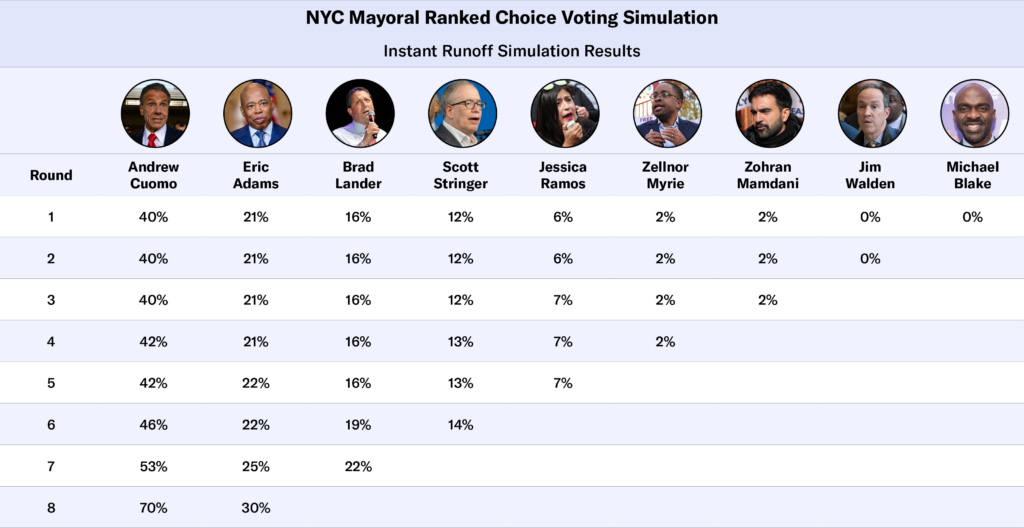In a city where Democratic dominance has long been a given, the latest election results are rattling assumptions and redrawing political maps. From a Republican surge in traditionally blue neighborhoods to a progressive toppling a party heavyweight, New York City’s 2024 and 2025 votes are making waves nationwide.

New York City’s Votes Are In
| Takeaway | Data Point |
|---|---|
| Trump gained ground in NYC | ~30% of citywide vote in 2024 |
| Queens & Bronx swing right | Trump got 38% in Queens, 27% in Bronx |
| Historic voter turnout | 384,000+ early Democratic ballots cast |
| Cuomo loses to Mamdani | Progressive wins primary in upset |
New York City just threw a wrench in America’s political script. Once reliably Democratic, parts of the Big Apple are flirting with red. Meanwhile, progressives are outpacing establishment candidates, and ranked-choice voting is giving voters more say. Wherever you live, these results hint at what’s coming nationwide: unpredictable races, changing coalitions, and a whole new political era.
A Redder Tinge in the Blue Empire
In the 2024 presidential election, Kamala Harris carried New York but with her narrowest margin in decades. Trump earned nearly 30% of the vote in NYC, defying expectations and historical norms. In Queens, his support surged to 38%, and even in the Bronx—a longtime Democratic fortress—he claimed 27%.
Those shifts aren’t just statistical noise. They’re reshaping the strategic playbook. Experts cite a mix of economic frustration, safety concerns, and more tailored outreach to Latino and Asian voters as the fuel behind the GOP gains.
I lived in Jackson Heights during the campaign and saw the ground game firsthand—Republican canvassers knocking doors in Bengali, Spanish, and Mandarin.
Zohran Mamdani’s Earthquake Win
In a stunning twist, Assemblymember Zohran Mamdani defeated Andrew Cuomo in the Democratic mayoral primary. Backed by Democratic Socialists of America, Mamdani built a movement around rent-free public transit, housing for all, and small-donor fundraising.
Cuomo, once a dominant figure in state politics, struggled to resonate with younger, more progressive voters. And despite big-name endorsements and donor money, he conceded before all ranked-choice ballots were tallied.

National Implications: Why Everyone Should Pay Attention
Urban battlegrounds aren’t safe
Trump’s numbers in NYC show Republicans can no longer be written off in big cities. That could redirect millions in ad dollars and redefine party messaging.
Progressives aren’t fringe anymore
With Mamdani’s win, progressive policy platforms now have electoral teeth. It’s reminiscent of AOC’s shock victory in 2018, but this time, it’s citywide.
Ranked-choice voting is changing the game
Voters ranked up to five candidates, promoting coalition-building and deeper voter engagement. Cities like Chicago and Los Angeles are watching closely.
General election could get messy
Come November, NYC may face a five-way mayoral race. Alongside Mamdani and Republican Curtis Sliwa, Eric Adams is exploring an independent run, and so is Cuomo under a new “Fight and Deliver” banner.
FAQs
Why did NYC swing more Republican?
Rising crime concerns, inflation, and tailored GOP messaging to immigrant communities, especially Latinos and Asians, played key roles.
What is ranked-choice voting?
It lets voters rank up to five candidates. If no one wins a majority, the lowest vote-getters are eliminated and their votes reassigned, helping coalition candidates succeed.
Will Cuomo really run as an independent?
Yes. He’s exploring ballot access through the “Fight and Deliver” party, potentially fracturing the moderate vote further.






